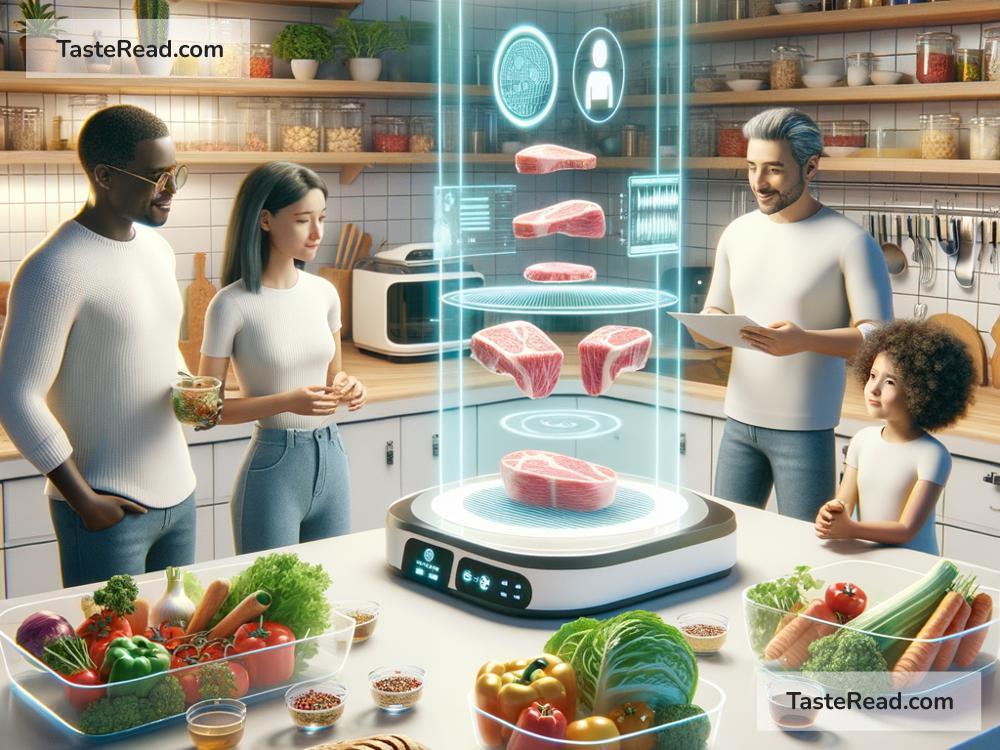The Future of Food and Public Health: What Lies Ahead?
Food is one of the most important parts of our lives. It gives us energy, keeps us healthy, and connects us as a society. But as the world changes—through technology, climate change, and population growth—our food systems and public health are facing new challenges. So, what might the future of food and public health look like?
Let’s explore how innovations, environmental factors, and societal shifts could shape the way we eat and take care of our health in the decades to come.
Food Technology: Smarter Ways to Feed the World
The future of food will likely be closely tied to advancements in technology. Scientists and companies are working hard to create solutions to make food production more efficient and sustainable.
- Lab-Grown Meat and Alternative Proteins
You may have already heard of plant-based meat products, like burgers made from soy or pea protein. The next big step is lab-grown meat, also known as cultured meat. Scientists grow real meat in labs using animal cells, which means we can produce meat without the need to raise animals. This not only reduces greenhouse gas emissions but also uses less land and water.
Another option gaining popularity is insect-based protein. Bugs like crickets and mealworms are high in nutrients and require far fewer resources to farm. They could become a major source of protein in the future!
-
Vertical Farming
Traditional farming needs a lot of space and depends on weather conditions. Vertical farming, however, grows crops indoors using stacked layers and controlled environments. This allows farmers to grow food in cities or places where traditional farming is difficult. Crops grown this way use less water and aren’t affected by droughts or other climate issues. -
Food Personalization
Technology is also helping people find the food that fits their unique health needs. In the future, genetic testing and wearable health trackers might recommend diets based on your DNA, activity level, and preferences. Personalized nutrition could help prevent diseases like diabetes and high blood pressure, making us healthier than ever.
Climate Change: A Growing Challenge
One of the biggest threats to the future of food is climate change. Rising temperatures, unpredictable weather, and natural disasters are already making it hard for farmers to grow food. In the future, we’ll need to adapt quickly to ensure that everyone has enough to eat.
-
Drought-Resistant Crops
Scientists are developing genetically modified crops that can survive in extreme weather. These plants are designed to grow even when there’s little rain or high temperatures. Such innovations may help farmers continue to grow food despite worsening climate conditions. -
Reducing Food Waste
Up to one-third of all food produced worldwide ends up wasted. Meanwhile, millions of people don’t have enough to eat. In the future, smarter storage solutions, education campaigns, and apps that connect consumers to excess food could reduce this waste and make sure food gets to people who need it. -
Global Cooperation
Fighting hunger and fixing food systems requires global teamwork. Governments, non-profits, and companies will need to come together to share resources, ideas, and technologies. Projects that strengthen food security and help local farmers will play a big role.
Public Health: New Ways to Stay Healthy
As food systems change, public health will also evolve. Modern medicine and technology are helping people live longer, healthier lives, but new challenges are emerging.
- Preventing Chronic Diseases
Unhealthy diets are one of the biggest causes of chronic diseases like obesity, heart disease, and diabetes. In the future, governments may implement stricter policies to reduce unhealthy food consumption. This could mean higher taxes on sugary drinks or fast food, or even incentives for eating fruits and vegetables.
Education will also play a key role. More people will learn about the importance of eating balanced meals that include fresh produce, whole grains, and lean proteins.
-
Food Safety
As food technologies become more complex, ensuring safety will remain a priority. Governments and scientists will use better tracking systems to monitor food from farm to plate and quickly respond to outbreaks of diseases like salmonella or E. coli. -
Health Inequality
Access to nutritious food often depends on factors like income and where you live. In the future, public health efforts will focus on making healthy food accessible for everyone. Cities might set up urban farms or community gardens to provide fresh produce in low-income areas. Schools could include healthier lunches to teach kids good habits from an early age.
New Mindsets Around Food
In the future, our relationship with food might change as well. Younger generations are already showing interest in plant-based diets, sustainable choices, and reducing food waste. Social media plays a big role in spreading awareness, encouraging people to think differently about how their food impacts their health and the planet.
Final Thoughts: A Healthy and Sustainable World
The future of food and public health is full of possibilities. Technology will help us grow more food while using fewer resources, and advances in medicine will promote healthier lifestyles. However, there are still big challenges ahead—from fighting climate change to making healthy food accessible for everyone.
Each of us has a role to play. By supporting sustainable farming, reducing food waste, and making healthier choices, we can contribute to a better future for food and public health. Together, we can build a world where everyone has enough to eat and enjoys good health.
So, the next time you sit down for a meal, think about how your choices could help shape this brighter future—for yourself, for others, and for the planet.


